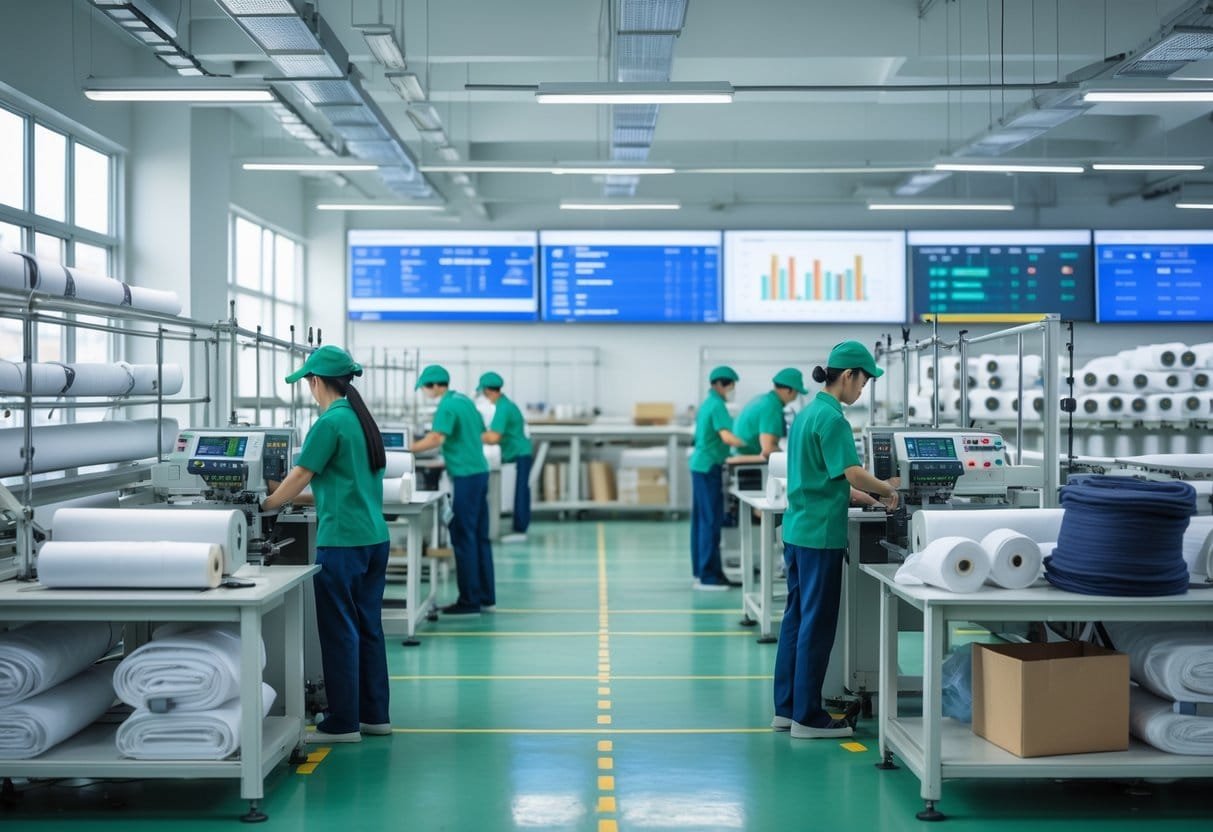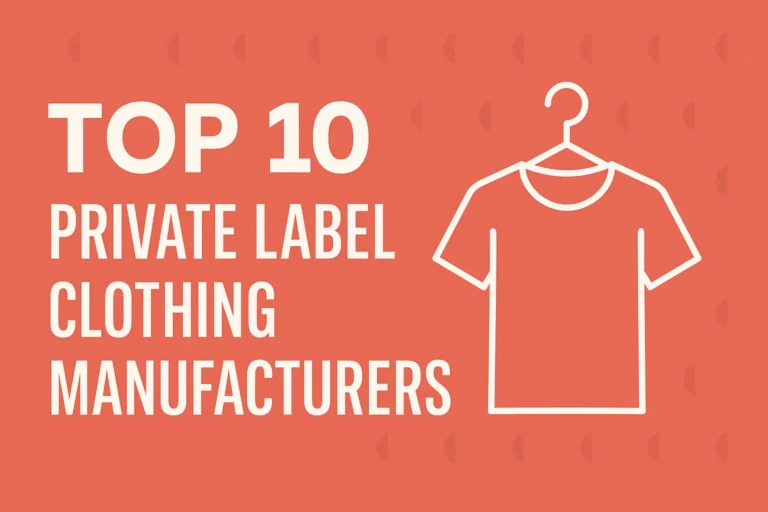Organizing Cost Of Manufacturing Clothing for Business Success
Managing the cost of manufacturing clothing is essential for running a successful clothing business. Knowing exactly how much it costs to make each garment helps businesses control expenses, price products correctly, and maintain profit margins. Without a clear understanding of these costs, companies risk losing money or mispricing their products.

Clothing manufacturing costs include raw materials, labor, factory overhead, and additional expenses like shipping and packaging. Tracking all these factors carefully allows businesses to spot where money is being spent and find ways to reduce waste. This detailed cost organization also supports better planning and negotiation with suppliers and buyers.
By organizing and analyzing manufacturing costs, companies gain an advantage in a competitive market. Accurate cost data helps in making smart decisions about production processes, inventory, and pricing strategies, which are all important for long-term profitability.
Key Takeways
- Clear cost tracking helps control expenses and maintain profit.
- Understanding all cost components enables smarter business decisions.
- Organized cost management supports pricing and competitive advantage.
Understanding the Components of Clothing Manufacturing Costs

Clothing manufacturing costs come from many specific areas. Each part affects the total price of producing a garment. Knowing these details helps businesses control expenses, set prices, and maintain profits.
Materials and Fabric Expenditures for Cost Of Manufacturing Clothing
Raw materials make up a large part of the production cost. This includes fabric, trims, buttons, and zippers. Fabric prices vary depending on type, quality, and source. Woven and knitted fabrics have different costs based on yarn, dyeing, finishing, and weight.
Materials used for trims and accessories also affect cost. These items have their own pricing and units of measure. Even small details like labels and threads add up.
Fluctuations in raw material prices, such as yarn costs or dye prices, can change the overall manufacturing cost. Accurate tracking of these expenses is vital to avoid surprises in budgeting.
Labor Costs and Workforce Considerations
Labor includes all direct and indirect work, from cutting and sewing to finishing and quality control. The number of workers and their efficiency influences the cost per unit.
Skilled labor commands higher wages, but can reduce waste and improve product quality. Labor costs also depend on factory location; regions with lower wages can cut expenses, but might affect quality or delivery times.
Companies must factor in overtime, training, and benefits. Proper workforce management can optimize production speed while controlling labor costs.
Machinery, Equipment, and Technology
Machinery, such as sewing machines and cutting equipment, carries both purchase and maintenance costs. Efficient machines can speed production and reduce errors but often require an upfront investment.
Technology like automated cutting tools or ERP software helps manage production data and costs. These systems track fabric use, labor hours, and waste, improving cost accuracy.
Depreciation on equipment is another expense. Factories must balance the cost of new technology with potential savings on labor and materials.
Overhead, Shipping, and Packaging Expenses
Overhead covers indirect costs such as factory rent, utilities, and administrative staff. Energy consumption by machines and lighting adds to overhead.
Packaging involves materials like boxes, tags, and wrapping, which protect products during shipping. Packaging quality impacts customer perception and returns.
Shipping costs vary by method, distance, and weight. Freight charges and customs fees can increase expenses, especially for international orders.
All these costs must be calculated to find the total manufacturing cost per unit. Proper allocation ensures a clear picture of profitability.
Creating and Managing Clothing Manufacturing Cost Sheets

A clothing manufacturing cost sheet helps track all expenses involved in making a garment. It breaks down material, labor, and overhead costs to give a clear picture of the total investment and how profit margins can be maintained. Managing these sheets accurately supports operational efficiency and pricing decisions in apparel manufacturing.
Purpose and Structure of the Cost Sheet
A cost sheet serves to organize all costs tied to garment production. It typically includes raw materials like fabric and trims, direct labor for cutting and sewing, and indirect costs such as factory overhead and shipping.
The structure often uses tables to separate costs, with sections like:
- Fabric and trims cost
- Labor costs (cut, make, trim – CMT)
- Overhead (electricity, rent, administrative)
- Packaging and finishing expenses
- Profit margin and markup percentages
This detailed layout helps manufacturers set prices that cover all costs and ensure profitability.
Essential Elements for Accurate Tracking
Accurate tracking requires detailed input on each factor influencing production cost. These include fabric type and usage, labor hours, and facility charges. Quality assurance steps, like inspection and rework, should be factored in as they add to costs.
Using real-time data on material prices and labor rates improves accuracy. ERP software can help organize data for fabrics, trims, colors, and sizes, making cost calculations easier. Tracking profit margins separately allows businesses to adjust pricing or reduce costs to maintain healthy profits.
Common Mistakes in Cost Estimation for Cost Of Manufacturing Clothing
Underestimating indirect costs like factory overhead or transportation is a common mistake. Overlooking variable costs such as power usage or waste due to fabric defects can lead to false profit margins.
Failing to update cost sheets regularly when raw material prices change or labor rates vary results in inaccurate pricing. Another error is ignoring quality assurance costs, which can rise if rejects increase.
Manufacturers should avoid relying purely on estimated costs and instead use actual production data to correct and improve their cost sheets regularly.
Optimizing the Clothing Manufacturing Process for Cost Efficiency

Reducing costs in clothing manufacturing requires clear planning, smooth production workflows, and the use of suitable technology. Focusing on key steps like organizing labor and machinery, managing cutting and sewing stages, and adopting advanced tools can improve efficiency and reduce waste.
Planning and Workflow Organization for Cost Of Manufacturing Clothing
Effective planning starts with analyzing each task in the production line to identify bottlenecks and unnecessary steps. Creating detailed work schedules helps allocate the right number of machine operators and balances workload between departments.
Documented Standard Operating Procedures (SOPs) clarify roles and reduce confusion. Using time studies and productivity metrics ensures tasks are completed within set limits, avoiding delays and overtime costs.
Clear communication of order specifications and consistent training support worker skills, lowering error rates. A well-structured workflow also improves the man-to-machine ratio, allowing better use of equipment and labor without adding extra costs.
Cutting, Sewing, and Production Stages
Cutting is a crucial stage where fabric is prepared efficiently to minimize waste. Proper use of cutting machines and grouping fabric rolls by width optimize material usage. Tracking leftover fabric for recutting also reduces raw material losses.
Sewing requires precise timing and machine setup to avoid downtime. Using ergonomic workstations with helpful equipment, like pneumatic stackers and table extensions, speeds up the process. Regular training helps machine operators maintain quality and productivity.
Each production stage should meet defined time targets to prevent delays. Monitoring defects carefully and addressing root causes saves money by reducing rework or scrap rates without compromising garment quality.
The Role of Advanced Technology in Production
Advanced technology enhances output by automating repetitive or complex tasks. Automated sewing machines, programmable pocket setters, and robotic handling can increase speed and accuracy while cutting labor costs.
Software tools support production by managing workflow, version control, and inventory, helping avoid errors and delays. RFID systems improve material tracking, reducing waste from overordering or misplacement.
Data-driven tools also help forecast demand and balance production lines before shifts start. Investing in technology improves equipment utilization and reduces manual tasks, which leads to lower overall operating costs for clothing manufacturers.
Quality Control and Assurance in Cost Management

Effective control and assurance of quality directly influence manufacturing costs. Maintaining high standards reduces errors and waste, which cuts unnecessary expenses. It also requires balancing product quality with budget limits, ensuring sustainable operations.
Implementing Quality Control Systems
A quality control system is essential for managing costs in clothing manufacturing. It involves setting standards, inspection points, and testing at various production stages. The production manager must train the skilled workforce to follow these procedures strictly.
Regular fabric inspection, in-line checks during sewing, and final product testing help catch defects early. Early detection prevents costly rework or scrapping of materials. Documentation of quality metrics also supports continual improvement and cost tracking.
Automation tools can assist in monitoring quality but must complement human oversight. The system should align with the brand’s standards and production capacity to avoid over-inspection or missed defects.
Reducing Rework and Material Waste
Rework and material waste significantly increase production costs. Managing these requires precise quality control processes and skilled labor capable of detecting and correcting errors quickly.
Errors during cutting, sewing, or finishing often lead to scrapped fabric or remaking garments. Training workers on proper techniques and real-time quality checks minimizes these risks.
Using quality assurance data, production managers can identify common defects and their causes. This insight drives process improvements and supplier quality controls, reducing waste from raw materials to packaging.
Reducing rework also improves factory efficiency, lowering labor costs and machine wear. Cost savings here can be reinvested into workforce training or better materials.
Balancing Cost and Product Quality
Balancing cost and quality is a key responsibility for production managers. Cutting costs too far may lower quality, causing returns, loss of customers, or damage to the brand.
Quality assurance ensures that every garment meets essential standards without unnecessary expense. This involves choosing appropriate raw materials, assessing supplier reliability, and monitoring factory processes.
Decisions on quality levels must consider the target market and price point. For example:
| Market Segment | Quality Focus | Cost Consideration |
|---|---|---|
| Premium | High-grade materials, detailed work | Higher production cost |
| Mid-range | Good quality with cost control | Balanced material and labor cost |
| Budget | Acceptable quality, basic features | Lowest possible cost |
This balance requires continuous communication with suppliers and a skilled workforce who understands the trade-offs. Effective quality control reduces costly defects while keeping the product appealing and competitive.
Inventory and Supply Chain Strategies for Cost Optimization

Effective management of inventory and the supply chain can directly reduce costs in clothing manufacturing. This involves precise control over stock levels, strong vendor partnerships, and minimizing delays in raw materials and production.
Inventory Management Techniques
Maintaining the right stock balance is critical. He or she should focus on tracking key performance indicators (KPIs) such as inventory turnover and service rate. This helps avoid overstocking, which ties up capital and increases storage costs, and understocking, which can cause missed sales.
Classifying products using ABC analysis allows prioritization of high-value or fast-moving items. Slow and obsolete stock must be regularly identified and cleared through discounts or returns.
Automating replenishment systems for predictable products ensures timely restocking without manual errors. Efficient inventory management in the apparel business reduces waste and improves cash flow.
Supply Chain Management and Vendor Relations
Strong vendor relationships help negotiate better prices, reduce minimum order quantities, and improve delivery reliability. Effective communication with suppliers allows quicker adjustments to changing demand.
Centralizing inventory when possible can simplify order management and reduce complexity. However, regional warehouses may be needed to balance delivery times.
Using supply chain KPIs helps monitor supplier performance, order accuracy, and on-time deliveries. These measures help minimize disruptions and hidden costs in the manufacturing process.
Controlling Raw Material and Production Lead Times
Shorter lead times reduce the need for large safety stocks, lowering inventory costs. He or she should analyze every step of lead time, including order processing, production, packing, and shipping.
Reducing delays can involve negotiating faster turnaround with suppliers or choosing closer sources. Tracking lead time variability highlights risks and areas to improve.
Forecasting demand accurately allows better planning of raw materials and production schedules. This reduces rush orders and idle time in production, directly cutting unnecessary expenses.
Profitability, Pricing, and Sustainable Competitive Advantage

Managing costs carefully is essential for profitability in clothing manufacturing. Success comes from setting the right prices, improving operations, staying alert to market demands, and adopting sustainable practices. These factors together help clothing businesses stay competitive and profitable.
Developing a Strategic Pricing Approach for Cost Of Manufacturing Clothing
A strong pricing strategy balances costs with customer value and competitor pricing. Pricing must cover raw materials, labor, and overhead while leaving room for profit.
Brands often use cost-plus pricing, adding a set margin over costs. However, value-based pricing, which considers what customers are willing to pay, can increase profitability. For example, sustainable or premium fashion can justify higher prices.
Pricing should also adapt to market conditions and the brand’s positioning. High-end brands may charge more for exclusivity, while budget brands compete on lower prices. Regular price reviews and market analysis ensure prices stay competitive and profitable.
Maximizing Profit Margin through Operational Excellence
Improving profit margins means cutting unnecessary costs and boosting efficiency. Lean manufacturing helps by reducing waste like excess inventory or overproduction. This lowers costs and improves cash flow.
Efficient supply chain management reduces raw material costs and avoids delays. Manufacturing processes benefit from modern machinery and automation, lowering labor costs and minimizing errors.
Tracking key metrics, like production costs and defect rates, supports targeted improvements. These efforts combine to increase output and lower per-unit costs, directly improving profit margins.
Responding to Market and Fashion Trends
Fashion trends change quickly, impacting demand and production needs. Successful clothing businesses monitor trends closely to align product offerings with customer preferences.
Fast adaptation avoids excess inventory and markdowns. Limited runs and flexible production schedules help meet shifting demands without unnecessary costs.
Pricing also needs to reflect trend popularity. Trending items may command premium prices, while outdated styles should be discounted to clear stock efficiently. Staying relevant in fashion helps sustain sales and profitability.
Integrating Sustainability and Eco-Friendly Practices
Sustainability is increasingly important for consumers and brands. Using eco-friendly materials like organic cotton and recycled polyester reduces environmental impact and can attract eco-conscious customers.
Techniques such as waterless dyeing save resources and reduce costs over time. Lean manufacturing principles further support sustainability by minimizing waste and improving processes.
Sustainable practices strengthen brand image and create long-term value. They also help reduce regulatory risks and resource dependency, contributing to steady profits in a changing market.
Frequently Asked Questions
Cost Of Manufacturing Clothing come from many sources like materials, labor, and overhead. Calculating startup expenses involves knowing fabric prices and production steps. Running a factory includes paying for labor, utilities, and equipment. Business success relies on planning, cost control, and market knowledge. Location impacts material costs and shipping fees.
What factors contribute to the overall cost of manufacturing clothing?
The main factors include raw materials such as fabric and trims. Labor costs for sewing and finishing are key. Overhead expenses cover electricity, machinery maintenance, and packaging. Shipping and transportation fees also add to the total cost. Profit margins are considered to price the final product properly.
How can one estimate the cost of starting a clothing line?
Estimating starts with calculating the price of materials and trims per garment. Labor costs for sample development and production are added. Additional expenses include patterns, sample making, and technology for design. Profit expectations influence the pricing strategy. Market research helps set realistic cost estimates.
What are the average manufacturing costs for producing a single article of clothing?
Costs vary widely but typically include fabric, trims, and labor. On average, raw materials can take up to 50%-60% of the total cost. Labor costs often represent 20%-30%. Overhead and shipping add the remaining percentage. Prices fluctuate based on quality, complexity, and location.
Can you break down the typical expenses involved in running a garment factory?
Factories spend on wages for skilled and unskilled workers daily. Utility bills cover power for machines and lighting. Equipment costs include maintenance and upgrades. Raw materials are stored and processed onsite. Administrative expenses and shipping logistics are ongoing costs as well.
What business strategies are crucial for the success of a clothing brand?
Accurate cost estimation helps avoid losses and maintain profit margins. Keeping production efficient and on schedule reduces waste. Strong supplier relationships allow better pricing and quality control. Marketing and brand positioning drive sales volume. Understanding customer demand helps adjust inventory and product lines.
How does location affect the cost of clothing manufacturing and sourcing?
Manufacturing costs tend to be lower in regions with cheaper labor and materials. Local access to fabrics and trims reduces shipping expenses. Factories in remote areas may face higher power and fuel costs. Proximity to markets reduces delivery times and freight costs. Trade regulations and tariffs also impact final expenses.







